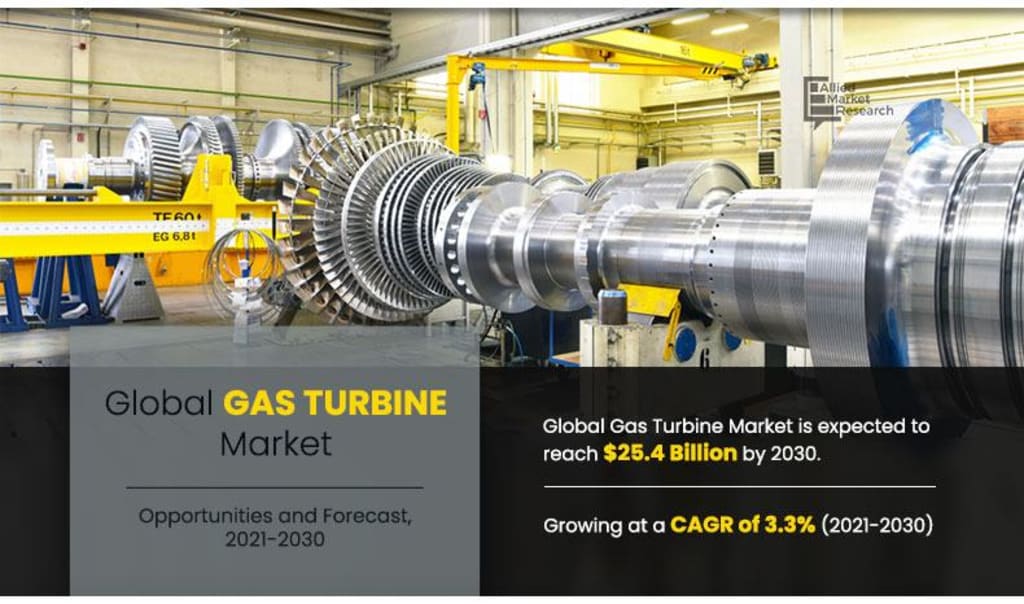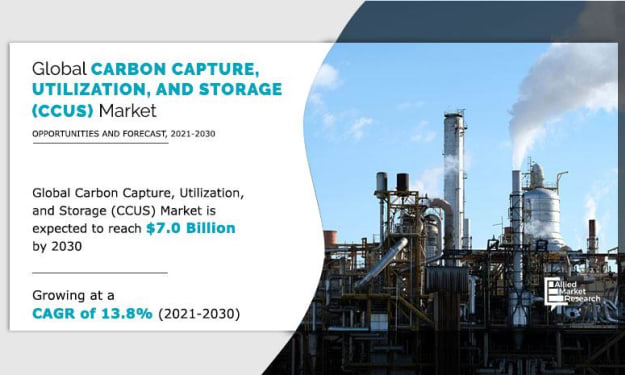Energy Revolution Underway as Gas Turbines Lead the Charge in Decarbonizing Power Generation
Fueling Progress: Gas Turbines Make Strides in Clean and Reliable Energy Production

A gas turbine, commonly known as a combustion turbine, is a versatile and efficient device that converts energy from fuel into mechanical energy through the combustion process. This technology is widely employed for various applications, including power generation, aviation, and industrial processes. Gas turbines consist of a compressor, combustion chamber, and turbine, working together to compress air, mix it with fuel, and ignite the mixture to produce high-velocity exhaust gases. These gases then drive the turbine, generating mechanical energy that can be used for electricity generation in power plants, propelling aircraft, or driving industrial machinery. Gas turbines are favored for their high power-to-weight ratio, rapid start-up capabilities, and versatility in different operational environments. Continuous advancements in design, materials, and control systems contribute to improving the efficiency, reliability, and environmental performance of gas turbines across diverse industries.
According to a new report published by Allied Market Research, titled, “Gas Turbine Market: Opportunity Analysis and Industry Forecast, 2021–2030,”the global gas turbine market was valued at $18.5 billion in 2020, and is projected to reach $25.4 billion by 2030, growing at a CAGR of 3.3% from 2021 to 2030.
A gas turbine is an engine, which heats a mixture of fuel and outside air at a high temperature to generate mechanical energy through the spinning of turbine blades. The mechanical energy further drives a generator, which produces electrical energy. These systems are primarily used for power generation.
Demand for gas turbine has witnessed significant increase driven by surge in applications of gas turbinessuch as power generation, oil & gas, marine, aerospace, and process plants. All industry players are investing heavily to find new commercial avenues for their product segments via strategic production and business expansion. Some of the major factors that drivethe demand for gas turbine includes rapid technological developments in the energy sector coupled and rise in demand for distributed power generation technologies. Rise in apprehensions toward greenhouse gas emission in line with stringent government norms pertaining to adoption of gas-fired turbines over traditional power generating units is anticipate to drive the gas turbine market growth.
Moreover, increase in energy demand across the developing economies such as China, India, and Brazil along with ongoing adoption of renewables when compared to conventional fuels is likely to strengthen the product integration. However, volatile price of natural gas is expected to hamper the growth of the market during the forecast period. On the contrary, increase in trend of distributed power generation and replacement of phased out nuclear & coal plants are expected to provide remunerative opportunities for the gas turbine market during the forecast period.
By technology, the global gas turbine market size is bifurcated into open cycle and combined cycle. The combined cycle segment garneredthe largest share in 2020, as it requires lower fuel to produce the required energy output and reduces transmission & distribution losses. The combined cycle segment dominated the global gas turbine market with more than three-fifths of the total market share in 2020.
Depending ondesign type, the market is segregated into heavy-duty and aero-derivative. The heavy-duty segment dominated the global gas turbine market with more than three-fifths of the totalmarket share in 2020.This is attributedto low investment cost, high-capacity operations, and lower pressure ratios to yield maximum specific power.
On the basis of rating capacity, the market is fragmented into less than 40 MW, 40–120 MW, 120-300 MW, and above 300 MW. The above 300 MW segment dominated the global market in 2020 with more than half of the total market share in 2020.due to shift from coal to gas-based power plants in some of the major countries across the globesuch the U.S., China, and India.
The applications coveredin the study include power generation, oil & gas, marine, aerospace, process plants, and others. The power generation segment dominated the global market with more than one-fourth of the total gas turbine market share in 2020, due to surge in efforts from governments all over the worldto reduce the share of coal-based power plants to reduce carbon emissions.
Region wise, the gas turbine market is studied across North America, Europe, Asia-Pacific, and LAMEA.Asia-Pacific dominated the market with more than two-fifths of the totalmarket share in 2020, owing to rise indemand for energy alternative having low environmental impact.
The major players studied and profiled in the global gas turbine industry are Ansaldo Energia, BayerischeMotoren Werke AG (BMW) (Rolls-Royce Motor Cars Limited), Bharat Heavy Electricals Limited, Capstone Green Energy, Caterpillar Inc. (Solar Turbines Incorporated), General Electric Company, Harbin Electric Company Limited, IHI Corporation, Kawasaki Heavy Industries Ltd., Mitsubishi Hitachi Power Systems, Ltd. (MHPS), MTU Aero Engines (Vericor Power Systems), Siemens AG, Volkswagen Group (MAN Energy Solutions), and Wartsila.
COVID-19 impact analysis
Lockdown impositions in major cities and economies have resulted in most of the industries around the world, thereby halting their production. This has further resulted in reduction of oil & gas demand around the world. For instance, as per the bp statistical review of world energy 2021, global natural gas consumption was reported to be 3822.8 billion cubic meters in 2020, which was a decline by around 81.1 billion cubic meters as compared to 2019. In addition, power demand from industrial and commercial end users has seen a significant dip in recent times, owing to the global pandemic. Thus, the demand for gas turbine is declined during the pandemic outbreak. This trend is likely to continue for few more coming years until all industrial activities across the globe resume to normal that are halted amid government-imposed lockdown measures.
Key findings of the study
- In 2020, Asia-Pacific dominated the gas turbine market with around 44.5% share, in terms of revenue.
- North America is projected to grow at the highest CAGR of 3.9% in terms of revenue.
- The combined cycle segment dominated the global gas turbine market with around 65.0% of the share in terms of revenue.
- The heavy-duty segment dominated the global gas turbine market with around 68.0% of the share in terms of revenue.
- The aero-derivativesegment is projected to grow at the highest CAGR of 3.9% in terms of revenue.
- The above 300 MW segment dominated the global gas turbine market with 55.0% of the share in terms of revenue.
- The power generation segment ledthe global gas turbine market with 27.5% of the share in terms of revenue.
- The aerospace segment is projected to grow at the highest CAGR of 4.1% in terms of revenue.
About the Creator
Enjoyed the story? Support the Creator.
Subscribe for free to receive all their stories in your feed.






Comments
There are no comments for this story
Be the first to respond and start the conversation.